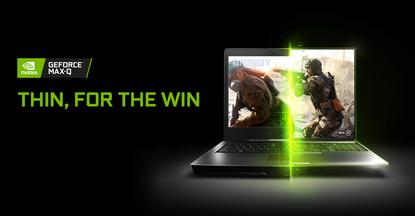Nvidia enhance Max Q mobile graphics specifications
- 02 April, 2020 18:00

Nvidia's popular 'thin and light' Max-Q graphics spec is getting an upgrade.
Originally launched in 2017, Nvidia are tinkering with what it means to offer Max-Q graphics performance in 2020. Specifically, they say that the biggest difference between 2020 Max-Q gaming laptops and their 2017 counterparts comes in the form of the new Dynamic Boost.
This feature works to efficiently shift power between the CPU and GPU on a per-game basis. Essentially, if the software powering the feature detects that you're playing a game that benefits from your GPU over your CPU on a per-watt basis, it'll optimise performance accordingly.
Other improvements include support for low-voltage GDDR6 memory, better regulator efficiency, 4K and 120Hz G-Sync capabilities and full integration with Nvidia's DLSS 2.0 tech. This feature uses AI-trained algorithms to deliver full native resolution image quality using only half the pixels. That's the pitch from Nvidia, anyway. For a full breakdown of why you should be excited about DLSS 2.0, click here.
If you already own a Max-Q laptop, the degree to which these enhancements will matter to you is going to vary. If you're using a Razer Blade kitted out with an RTX graphics card, you'll reap the benefits of DLSS 2.0. The other stuff? Less so.
Nvidia expect over 100 new gaming laptops incorporating the new Max Q spec to ship through OEMs in 2020.





